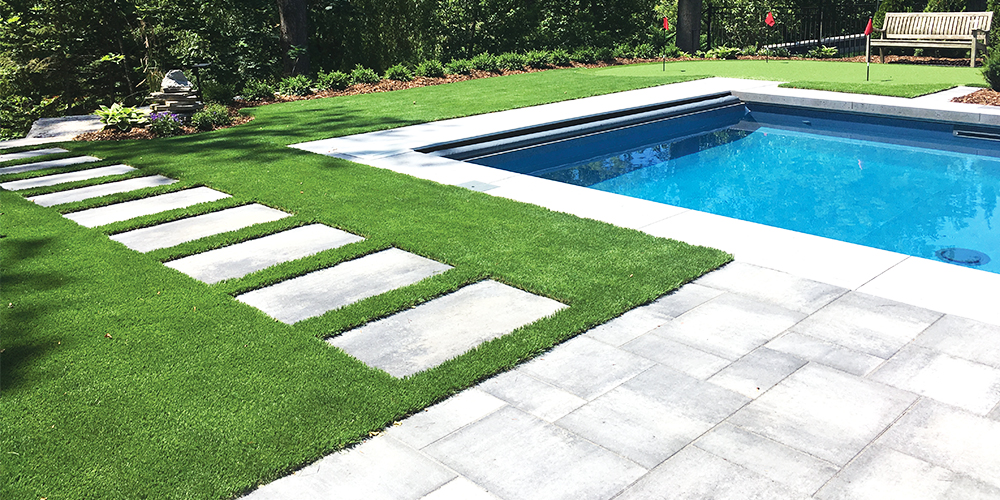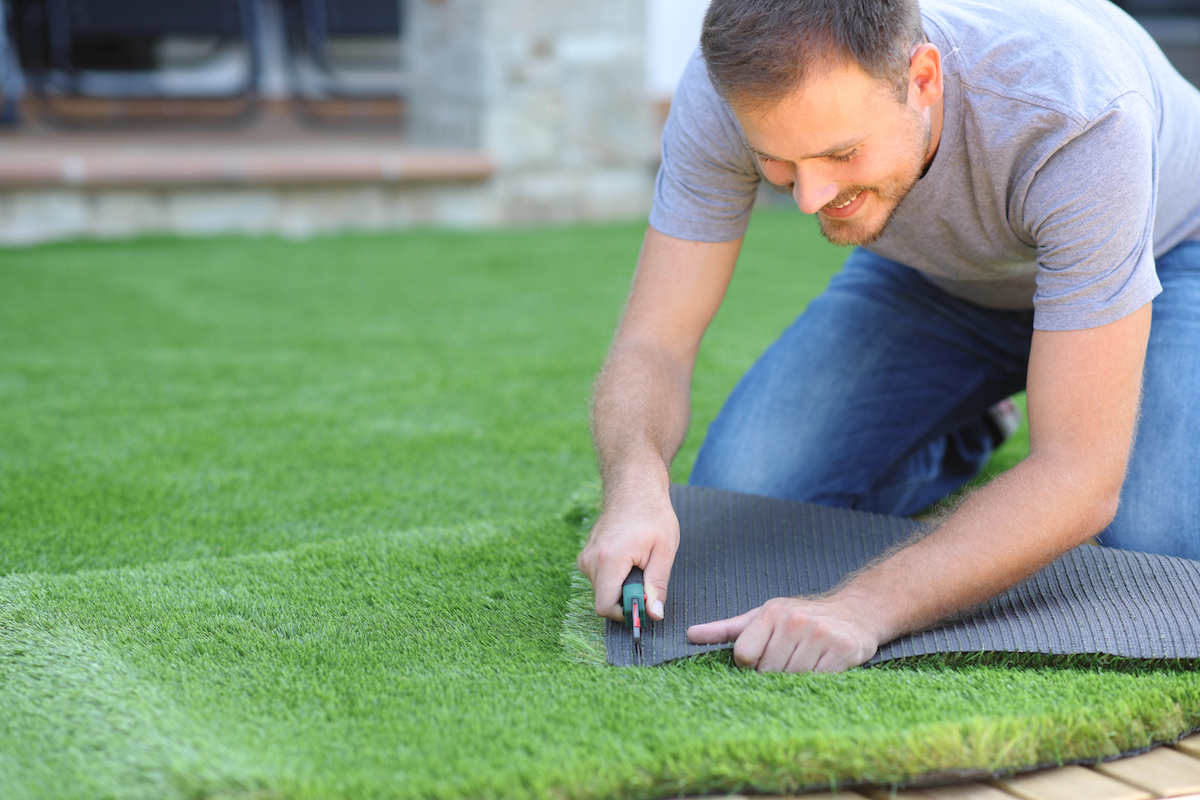Delve Into the Environmental Benefits of Opting for Artificial Turf Solutions
The adoption of artificial lawn solutions provides an engaging opportunity to resolve pressing environmental challenges. By dramatically decreasing water use and reducing the application of harmful chemicals, these options not only promote lasting landscape design but also safeguard neighborhood environments.
Water Conservation Conveniences
One of the most substantial advantages of synthetic turf is its capability to conserve water. Traditional lawn yards require substantial irrigation, especially in locations prone to drought or water restrictions. In contrast, synthetic lawn does not need watering, considerably minimizing the overall demand for water sources. This attribute is particularly helpful in dry areas where water shortage is a pushing problem.
By removing the need for normal watering, artificial lawn adds to lasting landscape techniques and aids mitigate the ecological impact of excessive water usage. Additionally, the conservation of water includes the reduction of runoff, which can bring about soil erosion and waterway contamination.
In addition, the setup of fabricated lawn allows property owners and districts to allot water resources a lot more effectively, concentrating on vital uses such as alcohol consumption water and agriculture. The change towards synthetic lawn not only advertises accountable water usage however also lines up with more comprehensive ecological goals targeted at preserving all-natural sources.
As neighborhoods increasingly focus on sustainability, the water conservation advantages of synthetic turf provide an engaging situation for its fostering in commercial and residential landscaping jobs.
Reduced Chemical Usage
The change to fabricated turf considerably decreases the dependence on chemical treatments commonly used in all-natural yard maintenance. Standard turf administration usually entails the application of herbicides, pesticides, and fertilizers to promote development and control bugs. These chemicals can posture threats to human health, neighborhood wild animals, and the setting, adding to soil and water contamination.
In contrast, synthetic grass removes the need for these unsafe substances. Once installed, it requires very little upkeep, mainly consisting of routine cleaning and occasional infill replenishment. This decrease in chemical usage not only benefits the immediate environment but additionally adds to broader eco-friendly stability. By lessening the release of synthetic compounds into the ecological community, fabricated grass advertises healthier dirt and water supply.
Moreover, the absence of chemical runoff connected with man-made lawn setups helps protect local rivers from contamination, supporting marine life and preserving biodiversity. Phoenix turf companies. As neighborhoods progressively prioritize sustainable techniques, selecting synthetic grass presents a viable option that straightens with environmental conservation objectives. Via this change, homeowner can enjoy rich green spaces without jeopardizing ecological health and wellness, paving the way for a much more lasting future
Reduced Carbon Footprint

Additionally, the setup of man-made grass can result in considerable water preservation. Natural lawns call for significant amounts of water for irrigation, which not just contributes to the carbon impact connected with water removal and treatment however additionally stress local water sources. In contrast, synthetic grass look these up needs very little maintenance, needing no watering, consequently significantly decreasing water usage and its linked power costs.
Additionally, the longevity of synthetic grass adds to its decreased carbon effect. With a lifespan of approximately 15 years or even more, the requirement for constant replacements is diminished, causing much less waste and reduced power consumption in production and taking care of typical yard options. On the whole, synthetic grass offers a lasting option for ecologically aware landscape design.
Habitat Preservation
Environment preservation is an important consideration in the argument over landscaping selections, particularly when comparing man-made lawn to all-natural turf. Natural grass lawns commonly require comprehensive maintenance, including using fertilizers, herbicides, and pesticides, which can adversely influence local ecosystems. These chemicals can leach into the soil and rivers, damaging indigenous plants and animals and interfering with neighborhood environments.
In comparison, synthetic grass presents a chance to reduce the ecological impact of landscaping. By choosing artificial lawn, homeowners can minimize the disturbance of all-natural habitats linked with typical yard care techniques. Man-made lawn removes the demand for unsafe chemicals, therefore securing nearby wildlife and preserving the honesty of bordering communities. Furthermore, the installment of fabricated lawn can cause the conversion of previous lawn locations right into even more biodiverse landscapes, such as pollinator yards or indigenous plant locations, which can support regional wildlife.
Eventually, the transition to synthetic grass not just saves water and minimizes upkeep initiatives however likewise cultivates a much more harmonious connection in between human tasks and the native environment, advertising environment preservation in the procedure.
Long-Term Sustainability
Lasting sustainability is an important aspect in examining the benefits of synthetic grass over typical grass yards. One of one of the most substantial benefits of fabricated lawn is its longevity; it can last as much as 15-20 years with marginal maintenance, whereas all-natural yard calls for regular reseeding and replacement. my website This durability minimizes the demand for continuous resources, such as water, fertilizers, and chemicals, which are crucial for maintaining a healthy yard lawn.
Furthermore, synthetic grass adds to a reduction in carbon emissions associated with yard treatment tools. Conventional yards often require gas-powered mowers, leaners, and blowers, all of which contribute to air pollution. Arizona turf. In contrast, synthetic grass gets rid of the need for such devices, advertising a cleaner environment
In addition, the production of synthetic lawn increasingly utilizes recycled products, improving its sustainability account. As manufacturers embrace eco-friendly practices, the ecological footprint of man-made turf remains to diminish.

Final Thought
The fostering of man-made lawn options presents considerable ecological advantages, including significant water conservation, minimized dependence on harmful chemicals, and a reduced carbon footprint. Furthermore, artificial turf help in maintaining all-natural environments by minimizing land disruption and promoting long-term sustainability with using resilient products. Jointly, these aspects highlight the potential of synthetic grass to add positively to ecological health and offer a viable choice to conventional landscaping techniques in a progressively resource-conscious world.
In comparison, man-made grass from this source does not need watering, significantly decreasing the total demand for water sources. By lessening the launch of artificial compounds into the environment, synthetic lawn advertises much healthier soil and water systems.
Moreover, the setup of man-made grass can result in significant water preservation. In comparison, man-made turf needs minimal maintenance, requiring no watering, thus considerably reducing water usage and its connected power costs.
